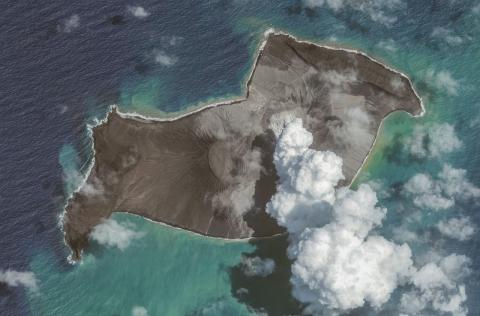Pacific nations have mostly escaped the heavy death toll and hospital bed shortages faced by Western countries battling Covid-19, but the pandemic has dealt a disproportionately severe blow to the region’s economic ambitions. But with the rollout of vaccines and economic recovery in sight in China and the West – the main trading partners of the Pacific – their recovery could have a positive impact on the region.
The 4.3% global economic contraction of 2020 has affected regions in different degrees. Sub-Saharan Africa output dwindled by 3.7%, while developing Asia shrank by 0.7% – the first time the region’s GDP has contracted in almost six decades.
The Pacific was no exception. With tourism stalled and a reduction in trading activity, the region has faced one of the worst economic crises in generations, with activity contracting by more than 5%. Regional per capita incomes fell by around 9% in 2020, setting average living standards back by almost a decade.
Containment measures have been efficient, and today most of the last Covid-free nations on earth are in the Pacific. Now, a reconnection to the world relies on the widespread rollout of Covid-19 vaccines.
A handful of Pacific countries are already well ahead in that regard, with Palau making the most of the US vaccination program “Operation Warp Speed”, being in prime position to be the first country to reach a vaccination rate of 60%. Nonetheless, most Pacific Island countries do not benefit from the same access and will rely instead on COVAX, the Covid-19 vaccines access program led by the World Health Organisation. Despite early commitments made by Australia and New Zealand to assist the region in accessing vaccines, some estimates still forecast the Pacific to take until 2025 to reach herd immunity. This would be a blow for tourism-dependent economies.
Supporting capital projects such as public infrastructure will provide much-needed economic stimulus, but it will also need to be complemented with social support and service delivery projects.
Tourism is indeed a key pillar of economic development for many Pacific island nations, to the extent that some have adapted to make the most of the current limitations. Fiji has set up its Blue Lane to allow private yachts to sail into Fiji's Port Denarau. The Cook Islands and New Zealand are to become the first two-way travel bubble by March, with similar arrangements to follow soon after in Niue. Palau is also looking at a similar partnership with Taiwan.
While not a panacea, these initiatives should have a positive impact on a region that faced a 99% decline in tourist arrivals last year.
In addition, the UN Economic and Social Commission for Asia and the Pacific (ESCAP) expects merchandise trade volumes to rebound by 5.8% in 2021, mostly driven by the recovery of the economies of the region’s main trading partners. Combined with the increasing prices for agricultural commodities and a weaker US dollar, these are promising signs for the Pacific.
Mining economies also benefit from a soaring gold price – up by 29.6% in the third quarter of 2020, mostly driven by global uncertainty and production disruptions. However, the average price of liquefied natural gas has been badly affected by weaker demand, with a decrease of 34% on last year, another drag on the Pacific’s economic recovery.
Overall, the revenues for the region’s governments are still projected to be lower than in 2020, while debt is forecast to increase this fiscal year, reflecting the massive fiscal stimulus implemented in 2020. What is concerning is that while revenue may recover with partial economic growth, this may not be enough to support ongoing spending needs, and governments may feel pressure to unwind some support measures to ensure their economic sustainability. To minimise this, Pacific islands nations will need fiscal support from development partners.
Last year, in the face of the dramatic economic consequences of the pandemic, most development partners reinforced their solidarity with the region, announcing around US$1.9 billion (about 5% of regional GDP) in prospective Covid-19–related financial assistance. This includes the G20 debt service standstill, redirected financing from the multilateral development banks, expanded IMF rapid financing and reprioritised and increased development assistance from Australia.
In 2021, the trend should continue. Not only does the region need more support, but ongoing strategic competition from China should see sustained involvement by traditional development partners. What’s more, while China will remain a key financing partner, the scaling back of Belt and Road Initiative lending should provide space for other development partners to support the region’s recovery.
In that regard, it seems the new Biden administration will have a positive impact in the region, as the US rejoins the Paris Agreement on climate change, fostering globalisation and hopefully pushing forward with some elements of the BLUE Pacific Act, which proposes $1 billion in assistance programs for the region for each of the next five fiscal years.
The challenge for development partners this year will be to ensure quality expenditure and meaningful contributions. Supporting capital projects such as public infrastructure will provide much-needed economic stimulus, but it will also need to be complemented with social support and service delivery projects.
In sum, 2021 has the potential to be a positive year for the region, but with many challenges. Macroeconomic conditions remain unfavourable for the Pacific, with high unemployment rates, indebtedness and the possibility of permanent damage to the travel and tourism industries. With adequate support, however, the region can slowly but steadily emerge from the crisis.


